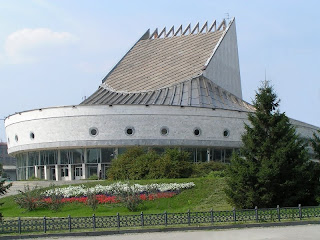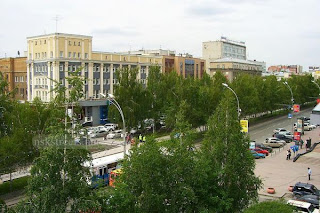
Novosibirsk Zoo is a world-renowned scientific institution as well as a popular tourist attraction.

Museum of the Sun in Novosibirsk is the first in the world and the only in Russia. The basis of the museum was a private collection of images of the Sun and Sun gods of the ancient civilizations, made in wood following archeological findings. There are over 400 exhibits, for example, the unique exhibits of the solar art traditional for India and Nepal. The museum often holds meetings with interesting people, musicians, singers, and travelers. its founder and director is Mr. Valery Lipenkov.

In Novosibirsk there are many interesting places such as the zoo. Novosibirsk Zoo is one of the largest zoos in Russia. It is located in a pine forest. In the zoo there are many different animals- bears, monkeys, tigers. Many of the animals are listed in the red book. On the territory of the zoo, there is a lake with picturesque pavilions, children 's playground, sculptures of animals, fountain and summer cafe.

I am interested in the theatre. It’s very exciting type of art. I like the theatre “Globe”. Academic youth drama’s theatre “Globe” of Novosibirsk is the first country’s regional youth theatre. The date of foundation and the beginning of activity of this theatre is 4th April 1930. In 1984 specially for the theatre a new building as a huge ship-sailing was building.
Today the theatre “Globe” organizes large-scale of cultural events.

Red Avenue (before 1920 Nicolas Avenue) is the central line of Novosibirsk. Its length is about 7 kilometers. It starts from the quay of the river Ob in the place where the Trans-Siberian Railway crosses the river. Then it passes through the territory of Central and Zaeltsovsky areas of the city from south to north. By the way, Sverdlov and Kalinin Squares as well as the central city square –Lenin Square are parts of Red Avenue. Red Avenue crosses almost entire Novosibirsk. It is wide and beautiful lined by trees and bushes.

The museum was founded in 1958 and belongs to the Institute of Geology, Geophysics and Mineralogy of the Siberian Branch of the Russian Academy of Science. It is the most visited museum of Academgorodok. There are over 700 mineral samples in it. Numerous and various minerals and ores of Siberia are presented in expositions: natural diamonds, precious and semiprecious stones, for example, including the rare semi-precious stone of the world — charoit and others. Collection of gold is impressing. Besides, there is a fine collection of stones grown up in laboratories of institute — the dark green emerald, bluish aquamarine, and others. By the way, fossil flora and fauna, and fragments of 34 meteorites in gross weight of 120 kg are also presented there.

In 1908-1910 in city center on the Market square a well-known architect A.Krjachkov built the City trading center, called to become the main administrative and trading building of Novonikolaevsk.
The building is the sample of architecture of a modernist style and till now is one of the sights defining appearance of a city. Today the building of the former Trading center belongs to Novosibirsk museum of local lore.
The museum was formed right after civil war in 1920, and consisted of two expositions – astronomical and geological. Names and museum subjects some times changed during its development till in 1937 the present name was fixed. From 1925 to 1987 the museum was in the former house of a merchant F.Mashtakov (a corner of Red Avenue and Sverdlov Street). In 1987 the museum occupied a building of the former Trading center after its serious repair.
Novosibirsk museum of local lore consists today of 2 departments: history and nature. History department shows history since ancient times up to now. The special place is given to expositions devoted to city history. Some exhibits are unique, for example, a collection of cult subjects, national suits or a collection of coins and bills. Nature department can also impress visitors, for example, with a paleontology collection or a collection of exotic fishes. The museum funds today include about 250 thousand units, many of which are unique.